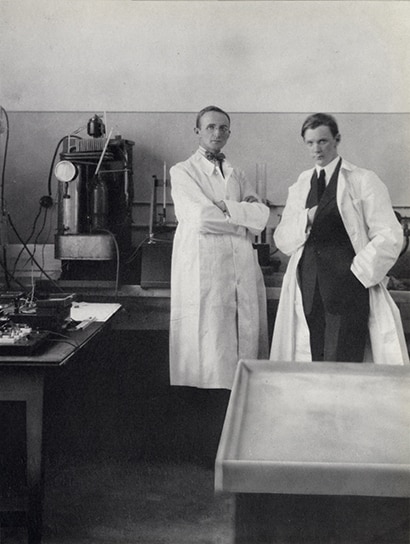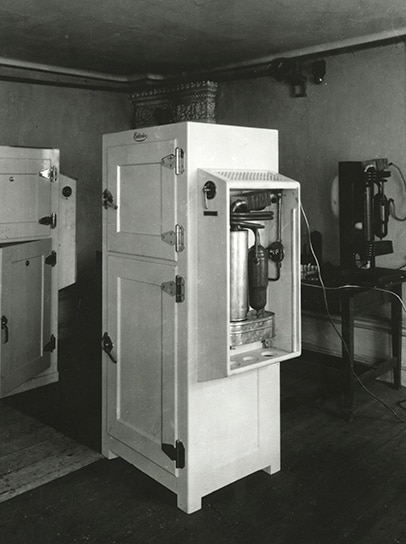Wenner-Gren now used everything he had in terms of experience, enthusiasm, a superior product and an incredible working capability. Marketing campaigns started immediately after the war in France and England. In Switzerland, Belgium, the Netherlands, Italy and Spain, new sales companies were soon established.
The company’s founder himself led these companies by constantly travelling by night-train between the European capitals. Wenner-Gren seemed to be everywhere at the same time, always inspiring his sales teams with new ambitious goals, inspirational stories and sales competitions. He also issued regular newsletters where he taught the salesmen how to increase sales.
New orders for vacuum cleaners arrived in a steady stream to the Lux factory in Stockholm, which now faced delivery problems – of 7,000 orders only 4,700 were delivered in 1919. This was problematic since 20,000 were budgeted for 1920. However, the capacity problems were handled and deliveries more than doubled each year.
The Lux machines were sold through direct home sales. It was an effective and appreciated way to introduce a completely new product category. In most cases the salesmen were men, which meant that most home visits had to take place when the housewife was not alone at home. The salesmen got a lot of training in how to behave, how to dress and how to demonstrate the health and hygiene benefits of the new machine.
In 1921, Wenner-Gren and his team launched what would become the real breakthrough vacuum cleaner; the innovative model V. Up until now, vacuum cleaners had been designed in a barrel shape, but the Lux V instead was a horizontal tube. By putting metal runners on the cleaner, an idea from Wenner-Gren himself, the user could pull the machine and thereby make cleaning much easier and enjoyable.
With the Lux V, sales increased exponentially. New production sites had to be built and in 1926 Electrolux first factory outside Sweden was opened in Berlin, Germany. It was followed by factories in France, UK, US and even in distant Australia in the 1930s. Production capacity increased from thousands of cleaners per year to thousands per day! More sales companies were opened, including countries like Argentina, Brazil, Mexico and New Zeeland. Towards the end of the decade, Electrolux had around 10,000 employees around the world.

Baltzar von Platen and Carl Munters ca. 1937
In 1922, Axel Wenner-Gren learned about two young Swedish scientists, von Platen and Munters who had built a prototype for a refrigerator based on the so-called absorption principle. It was safer, quieter and and could operate without an electricity supply. Wenner-Gren understood that this could be the perfect complement to the cleaners.

The Electrolux Model D refrigerator began production in 1925
And if consumers could store their food longer and safer, this would greatly improve their culinary possibilities. It would take considerable investments before he could launch the first absorption refrigerator in 1925. This first fridge used water for cooling, but in 1931 Electrolux launched the first air-cooled absorption fridge. This innovation was a real success, and during the 1930s over four million fridges were sold.

